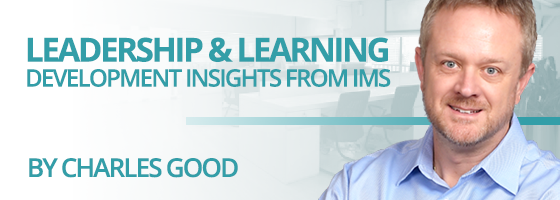Are you good at generating creative and innovative ideas? How can you train people to get more creativity and innovation at work? These questions were the focus of Dr. Iris Firstenberg’s July 21st program for The Institute for Management Studies.
Many approach these questions by encouraging others and themselves to “think outside the box.” Some feel that creativity is something that you’re born with and that it is not something that can be learned or improved on over time. Experts disagree however.
Best-selling author and a leading creativity thinker Clayton Christensen stated that, “Creativity is not just a genetic predisposition; it is an active endeavor. In his book, Innovator’s DNA: Mastering the Five Skills of Disruptive Innovators, Dr. Christensen admitted that genetics plays a role but he believed that innovation is a skill that can be learned.
Twyla Tharp, one of America’s greatest choreographers, supports this idea in her best-selling book, The Creative Habit: Learn It and Use it for Life. In the book she argues that creativity is a habit, and it results directly from establishing good work habits.
There is ample evidence provided by numerous respected experts against the argument that your genetic code determines your level of creativity and innovation; rather, it is a skill that can be developed over time. A skill that is becoming more valuable in our constantly changing business environment.
In our July 21st IMS virtual program, Dr. Iris Firstenberg, Adjunct Professor of Psychology, UCLA and Adjunct Professor of Management at UCLA Anderson, and co-author of Extraordinary Outcomes: Shaping an Otherwise Unpredictable Future, provided some great tips and strategies to improve your innovative thinking. I have summarized some of the key takeaways in this week’s IMS blog.
1. KEEPING YOUR OPTIONS OPEN
Innovative thinking is about expanding your possibilities. Don’t feel compelled to pick one when you are presented with two choices. When somebody offers you two choices, how many options do you actually have? The answer: four. Sure, you can choose A or B, but if they’re both attractive? Then try to find a way to do both. On the other hand, sometimes neither choice is attractive, in which case you’ll have to come up with an entirely different option.
2. DON’T BE A HOSTAGE TO HISTORY
How many times have you heard someone in your organization say, “because that’s the way we have always done it”, or “we tried that once before and it didn’t work”? Don’t let the way you have done something in the past to limit how it is done moving forward.
3. THE WANDERIND MIND
Sometimes to best way to be innovative is by not trying. Make sure to allocate time each day to allow your mind to wander. This will help trigger new ideas and associations..
4. BRINGING THE FUTURE TO THE PRESENT
Your imagination can be used to create a more vivid picture of the future in order to shape better outcomes. Keep in mind that the future doesn’t arrive evenly to everyone. The future you are imagining for yourself may already be someone else’s present state. Who is exceptional with this attribute? Try to go beyond, or outside of your industry for some examples.
BUILDING A CULTURE OF ROI
Dr. Firstenberg states in her book, Extraordinary Outcomes: Shaping an Otherwise Unpredictable Future, organizations need to create a ‘Culture of ROI’. In this instance, ROI stands for Relentless Ongoing Improvement. The are many ways to encourage this type of culture through various work processes and methods, Dr. Firstenberg shares methods used in her book. One method that Toyota uses it to ask “why?” five times to get at the root cause of an issue and make sure that the real problem is addressed. Another example that Dr. Firstenberg provides from the US Army similarly uses four ‘why’ questions that are designed to get people to compare expected results to actual results.
To support the development of an ROI culture that fosters creativity and innovation the environment has to be one where it is ‘safe to fail’. Whose responsibility is it to create such an environment? The leader, of course, who needs to make sure people feel comfortable in offering ideas, expressing their concerns and learning from their failures.
ABOUT CHARLES GOOD
Charles Good is the president of The Institute for Management Studies, which provides transformational learning experiences that drive behavioral change and develop exceptional leaders. Charles is an innovative and resourceful leader who specializes in bringing people together to develop creative organizational and talent strategies that enable business results. His areas of expertise include assessing organizational skill gaps and leading the design, creation and delivery of high impact, innovative learning solutions that achieve business goals.

1 Comment